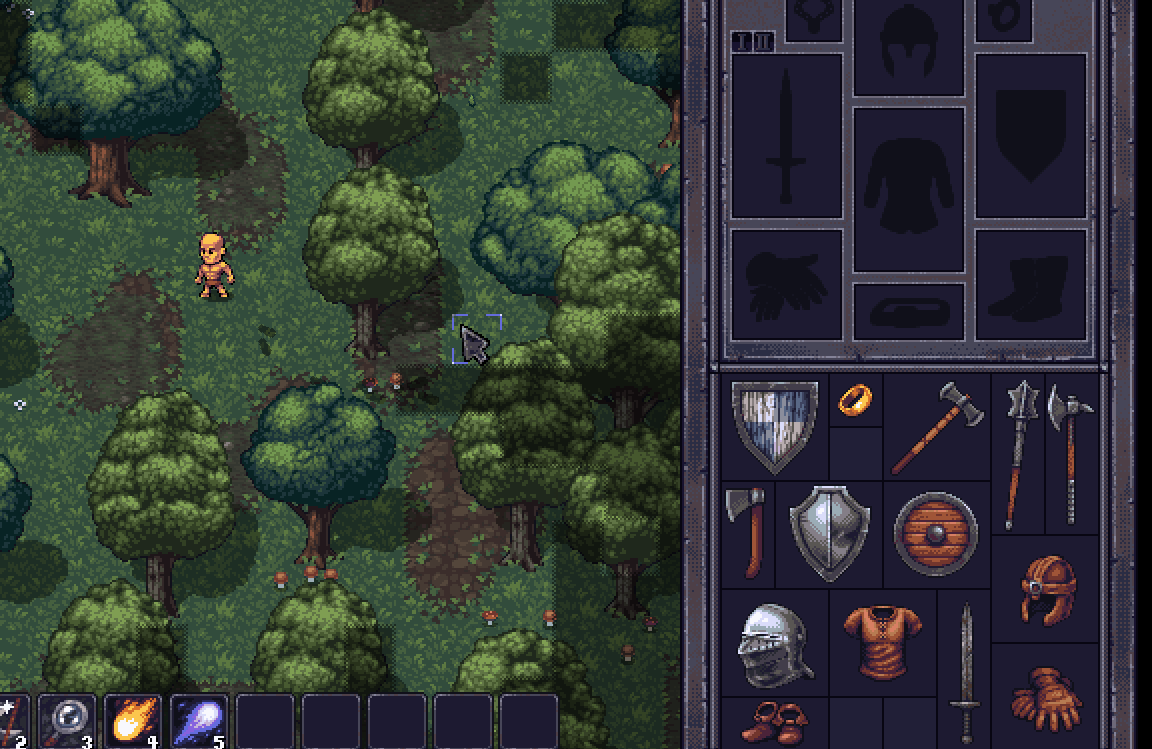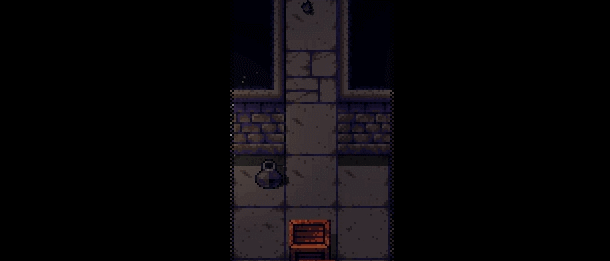
Jul 16, 2017
Stoneshard - Wayfinder

Hello everyone!
You must have missed our devlogs, aren't you? Well, that was not in vain – and in this diary we'll tell you more about Stoneshard combat system.
What's the combat like in traditional roguelikes? The player's character has the set of various attributes, and his enemies have their own sets of exactly same attributes. They get close on neighboring tiles and attack each other – the one with higher attributes usually wins the fight. Sometimes RNG may take place: someone may land a critical hit, block incoming attack or just evade the hit – but that rarely affects the general outcome.
In Stoneshard there are even more possible strike outcomes: for instance, you can accidentally fumble, thus hitting with severely lowered damage. You can critically fumble as well – and in melee that means you will hurt your own limb. All of this is connected to several dozens of different attributes, which you, the player, will improve during the game's course – with special Attribute Points, equipment, traits and some passive abilities.
Though this concept is a classic one – and quite viable on itself – we always thought it lacks some flexibility, and player lacks the possibility to directly influence the fight. Yes, correct positioning and the usage of skills may have a huge impact, but in the beginning of the game, when your character doesn't have huge arsenal of abilities, the fighting system gets a little bit boring and random. And then we came with the solution: Attitudes. So what are Attitudes?

By this name we mean a certain mix of character's battle stance, preferred tactics and the overall "fighting" mood. Each Attitude has its own advantages and disadvantages, differently modifying character's attributes. All Attitudes are designed for very specific cases. Thus tactically thinking player will be able to quickly adapt to dynamically changing situation by taking right Attitude in time. As you may have guessed, it will take a turn.
We added nine different Attitudes:
- Aggressive
This attitude develops the offensive potential, but makes defensive techniques harder to perform. Aggressive Attitude is great to use in one–on–one fights if your life isn't under great threat. - Defensive
This attitude focuses on using of defensive maneuvers but worsens your attacking skills. It's intended for those cases when you must survive at any cost – for example, in battles with overwhelming and dangerous enemies. - Balanced
This attitude is a great choice for those who don't like to risk and rely more on skill than luck. This fighting style strengthens your usual attacks and improves your blocking technique at the cost of making critical strikes much less likely and effective. - Precise
This attitude allows to fully focus on ranged combat at the cost of mobility and overall attentiveness. It's effective in situations where the enemies are quite far away to snipe them from a distance. - Cautious
This attitude makes combat incredibly risky and hard but helps to retreat and hide. It's fit for those cases when your successful retreat is a matter of life and death. - Stealthy
This attitude increases your chances to stay hidden before the right moment but it makes you less nimble and lowers your field of view. It's intended for the situations when successful surprise attack will bring a great advantage. - Meditative
This attitude helps to abstract oneself from the world, improving body's restorative forces. It's great to use after hard fights. - Concentrated
This attitude helps to fully control one's own consciousness. It increases spell power but leaves the caster almost defenseless in melee combat. - Full Potential
This attitude allows mystical energies to flow directly through one's body. It fully uncovers hidden magical powers at the cost of decreased vital forces and worsened physical control.
Mind that each character won't be able to take every attitude from the beginning – for example, Dwarven Berserkers aren't familiar with Meditative, Stealthy or Cautious Attitudes – while Elven Shadows specialize on those, but aren't taught how to get fully Aggressive. However you can unlock missing Attitudes as you advance through the game – but this is a topic of another devlog.
Stay tuned!










